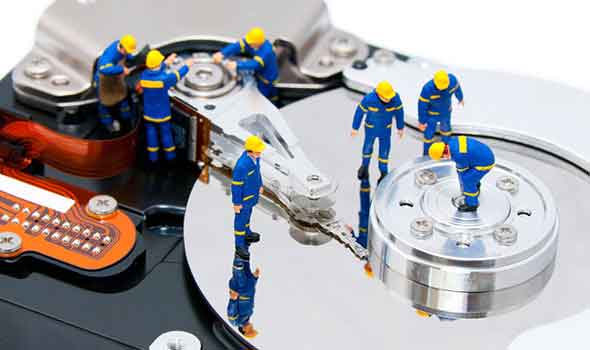Broken hard drive? Symptoms and what to do
A hard drive, also known as an HDD, is an electromechanical data storage device that stores and retrieves digital data using a magnetic memory and one or more fast-rotating hard platters coated with magnetic material. It is an important part of your laptop or desktop PC that helps to store your important data. And if something goes wrong with the HDD, there are chances that you may lose your important data. Below are some symptoms of a broken hard drive and how to fix them. The causes of a broken hard drive could be power outage, firmware corruption, hardware failure, virus attack or human error are some of the common reasons behind hard drive failure.
Read also: How to install SSD, all models
Broken hard drive symptoms
In most cases, hard drives will begin to fail gradually. This means that you still have time to save or transfer your data to another drive before it is lost forever due to a fatal error. But how do you know when the unit is about to break down? We show you some of the symptoms of a hard drive failure.
1. The computer stops responding, freezes, or displays a blue screen. When observed in your PC, the three signs indicate that the hard drive is starting to fail. There can be so many other causes such as computer slowdown, frequent freezes or even blue screens of death. However, hard drive failure is, in most cases, a significant culprit.
2. Strange sounds. When you start hearing strange sounds coming from your hard drive, know that you are in big trouble. Repetitive sounds, usually referred to as “death clicks,” result from the head attempting to write data, failing in the process, returning to its starting position, and retrying repeatedly. If you hear screeching or screeching noises, it mainly indicates that some parts of the hardware, such as the spindle motor, have broken.
3. An increasing number of bad sectors. A bad sector on a disk storage drive is an error that leaves permanent damage. All information on bad sectors of a hard drive is automatically lost. But how do you identify bad sectors on a hard drive? You will know this when the disk ticks or the computer opens files slowly.
4. Missing files. Sometimes you start to mysteriously lose files from your hard drive. If you realize that some files won’t open or you notice that they have become corrupted even if you have saved them correctly, this is a symptom of a broken hard drive.
5. It takes too long to access files and folders. This is another sign that your hard drive has already failed. When this effect occurs, you will have an oddly long wait to access folders and files.
Broken hard drive what to do
1. The computer stops responding, freezes, or displays a blue screen. If your computer is experiencing these problems, the best thing to do is to run Self-Monitoring, Analysis, and Reporting Technology, or SMART. Remember, while Windows automatically collects information in the background, it isn’t quick to predict hard drive failure. Therefore, the hard drive may start malfunctioning before the SMART alert is triggered. For more effective monitoring of the hard drive status of your computer, it is recommended to use third party software. Install the software, such as CleverFiles Disk Drill, run it and choose to scan the health of your disk.
2. Strange sounds. This is a very important sign that hard drives will crash soon. The data must be copied or transferred immediately to another drive as soon as possible. The risk is to lose all data.
3. An increasing number of bad sectors. If you realize that your hard drive has so many bad sectors, you can partition the drive to save your data or transfer your files to another hard drive. This way, your documents will be much safer even if the drive crashes or breaks down completely. Windows has a built-in disk check utility called CHKDSK which can help you recover data from bad sectors and exclude them from future use. Open command prompt as administrator, type command chkdsk /rc: (for your C drive 🙂 and hit the Enter key, enter Y when prompted and CHKDSK will run once your computer restarts.
4. Missing files. As much as you can use broken hard drive software to recover missing files, when you realize the drive is starting to fail, you can partition it and monitor how the partitions work or move your documents to a safe place.
5. It takes too long to access files and folders. You should take this slowness as a warning sign and start hard drive recovery. Move your files to a safe place and change your hard drive.
Run a virus scan
You can also run a full virus and malware scan, as malicious software can often cause problems like freezing or file corruption that you might mistake for drive issues. There are many good programs available for this; read this article on the best antivirus programs and our article on the best antimalware programs.















